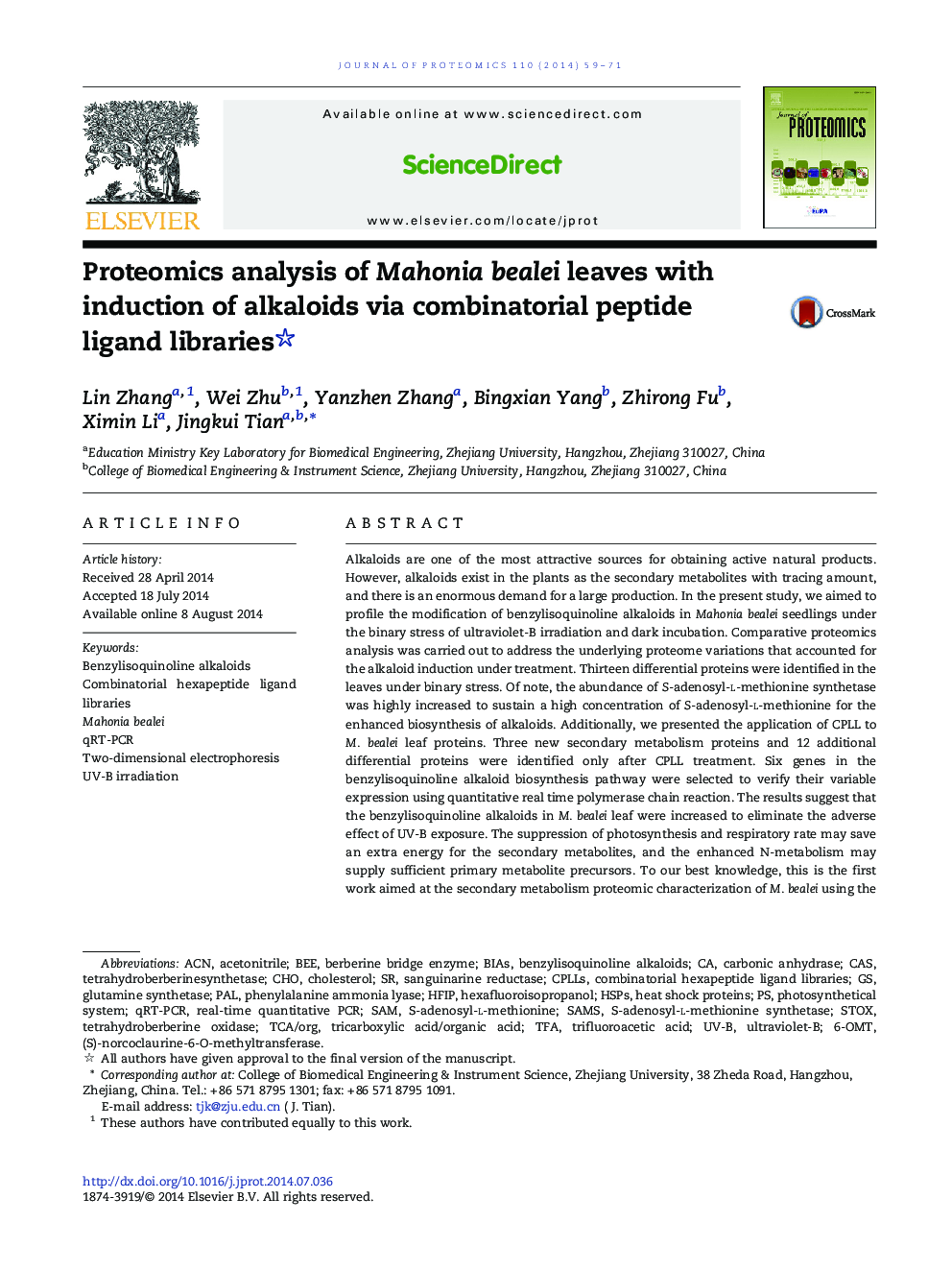| کد مقاله | کد نشریه | سال انتشار | مقاله انگلیسی | نسخه تمام متن |
|---|---|---|---|---|
| 1225721 | 1494770 | 2014 | 13 صفحه PDF | دانلود رایگان |

• The benzylisoquinoline alkaloids in M. bealei leaves were increased.
• The mechanism of increased alkaloid was studied by proteomics analysis.
• CPLL technology was applied for investigation of low-abundance proteins.
Alkaloids are one of the most attractive sources for obtaining active natural products. However, alkaloids exist in the plants as the secondary metabolites with tracing amount, and there is an enormous demand for a large production. In the present study, we aimed to profile the modification of benzylisoquinoline alkaloids in Mahonia bealei seedlings under the binary stress of ultraviolet-B irradiation and dark incubation. Comparative proteomics analysis was carried out to address the underlying proteome variations that accounted for the alkaloid induction under treatment. Thirteen differential proteins were identified in the leaves under binary stress. Of note, the abundance of S-adenosyl-l-methionine synthetase was highly increased to sustain a high concentration of S-adenosyl-l-methionine for the enhanced biosynthesis of alkaloids. Additionally, we presented the application of CPLL to M. bealei leaf proteins. Three new secondary metabolism proteins and 12 additional differential proteins were identified only after CPLL treatment. Six genes in the benzylisoquinoline alkaloid biosynthesis pathway were selected to verify their variable expression using quantitative real time polymerase chain reaction. The results suggest that the benzylisoquinoline alkaloids in M. bealei leaf were increased to eliminate the adverse effect of UV-B exposure. The suppression of photosynthesis and respiratory rate may save an extra energy for the secondary metabolites, and the enhanced N-metabolism may supply sufficient primary metabolite precursors. To our best knowledge, this is the first work aimed at the secondary metabolism proteomic characterization of M. bealei using the CPLL technique. It also presented an effective and innovative process to improve the contents of alkaloids in medicinal plants for industrial production.Biological significanceBesides the effective and innovative process to improve the contents of alkaloids in M. bealei leaves for industrial production, the presented combinatorial hexapeptide ligand library technology was applied for the study of low-abundance protein in medicinal plant. It may be an available tool for the analysis of the secondary proteins.
Figure optionsDownload high-quality image (168 K)Download as PowerPoint slide
Journal: Journal of Proteomics - Volume 110, 14 October 2014, Pages 59–71